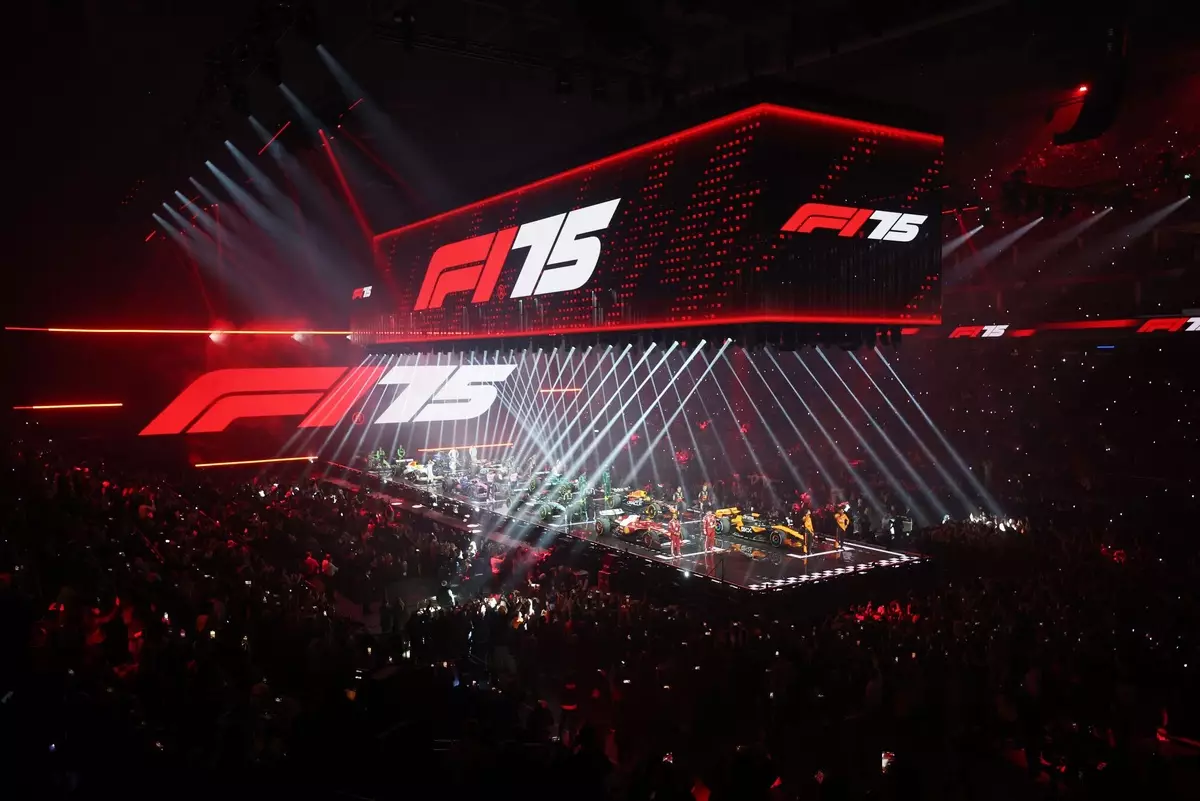In recent years, the world of Formula 1 has seen a substantial transformation aimed at broadening its appeal beyond traditional racing fans. The recent F175 livery launch event, held in London’s iconic O2 Arena, epitomized this shift. While the evening boasted glitz and glamour, it stirred a polarizing discourse within the racing community, particularly among the sport’s purists. This article aims to dissect the implications of this event, evaluating its significance in the wider context of Formula 1’s ongoing evolution and the challenges it faces in pleasing a diverse fan base.
As the lights dimmed and the crowd’s enthusiasm surged, one initial observation struck: the reactions were sharply divided. Many in attendance celebrated the spectacle, cheering as drivers like Lewis Hamilton appeared on stage. However, contrasting this were the harsh boos directed at figures like Christian Horner, the frontman of Red Bull Racing. This cultural clash is indicative of a broader struggle. Many long-time fans are wary of what they perceive as a departure from the sport’s racing-centric roots, while the organizers aim to charm a younger crowd potentially unacquainted with the intricacies of the sport.
Comedian Jack Whitehall’s comment about “purists groaning” encapsulated the essence of this dichotomy. The traditionalists lamented the crass commercialization of what they believe should be a refined motorsport, while others relished in the showmanship. But as the event aimed to be inclusive, it underlined F1’s commitment to innovation, taking a decisive step away from stale car launches toward something more theatrical and engaging.
With teams reportedly pouring substantial resources into their presentations—Red Bull’s alone costing about £800,000—the financial burden raised eyebrows among team members and loyalists alike. Questions began to arise as to whether this expenditure was justifiable. Was this grand performance necessary, or was it an extravagant spectacle designed simply to linear the sport into the 21st century?
Despite the criticisms, this endeavor was not simply an exercise in excess. By drawing in a broad swath of fans who might not otherwise attend a live race, F1 aimed to build its portfolio of supporters. It was an attempt to weave motorsport into the fabric of mainstream entertainment, appealing to those who enjoy performance and spectacle rather than the technical nuances of high-speed racing.
The event was not devoid of dramatics, as the spotlight fell on the inherently theatrical rivalries among drivers and team principals. Horner’s entrance led to a chorus of boos—reactions that cleverly echoed the intense rivalries within the sport, especially amplified by media portrayals like those seen in Netflix’s “Drive to Survive.” Meanwhile, Verstappen’s earlier quip from Whitehall about his past tangle with George Russell only stoked the flames of competitive banter.
For Horner, this was a double-edged sword; being the center of fan disdain could be damaging, yet it also solidified his role as a key player in the ongoing narrative of F1. This performance element, while visceral and potentially uncomfortable, ultimately created an atmosphere tensed with anticipation for rivalry, a cornerstone of F1’s appeal.
The evening offered a varied menu of team presentations, with each showing distinct styles—Aston Martin drawing on its cinematic links and McLaren nodding to its championship history. Yet the disappointment of not hearing an actual car fire up during the presentations hinted at opportunities missed to further engage the audience in a tangible way.
Critiques aside, this livery launch may well serve as a blueprint for future events. It’s clear that F1 is on a mission not only to innovate but also to increase inclusivity, seeking to attract a more diverse base without alienating its core followers. Such initiatives will require ongoing recalibrations, yet the successful turnout and engagement suggest that F1 has taken steps in the right direction.
The successful execution of the F175 livery launch provided a road map for Formula 1’s future endeavors. While the frictions between traditional values and contemporary ambitions will continue to surface, it’s vital for the sport to engage its audience with fresh perspectives. As the launch event drew mixed reactions, it highlighted an essential turning point in F1’s journey.
Embracing change does not come without challenges, but by tapping into a younger audience while remaining attuned to the sentiments of purists, F1 can continue to thrive. This bold gamble is a testament to its ability to adapt and grow, and rather than resist it, fans should celebrate the adventurous spirit of a sport that continues to evolve in a rapidly shifting cultural landscape.

